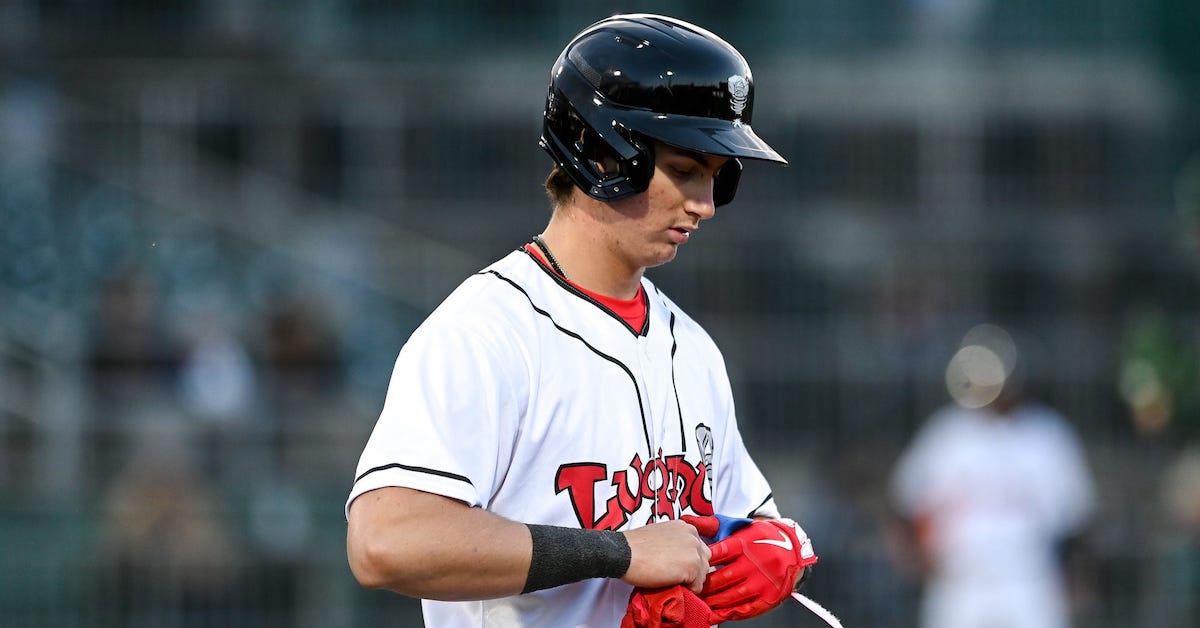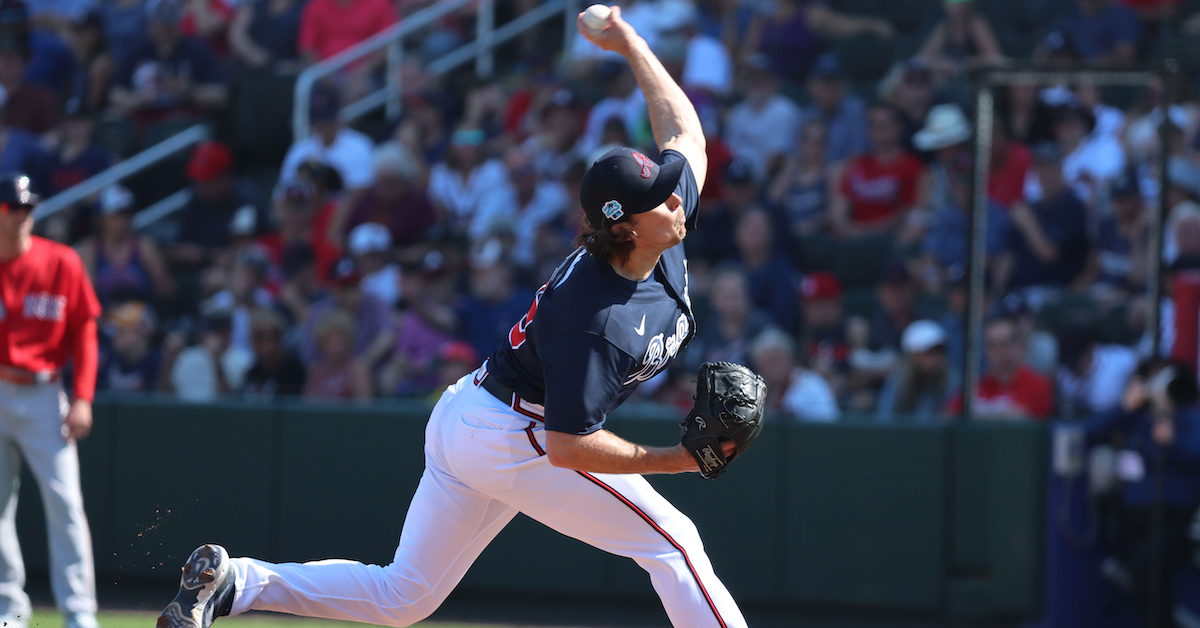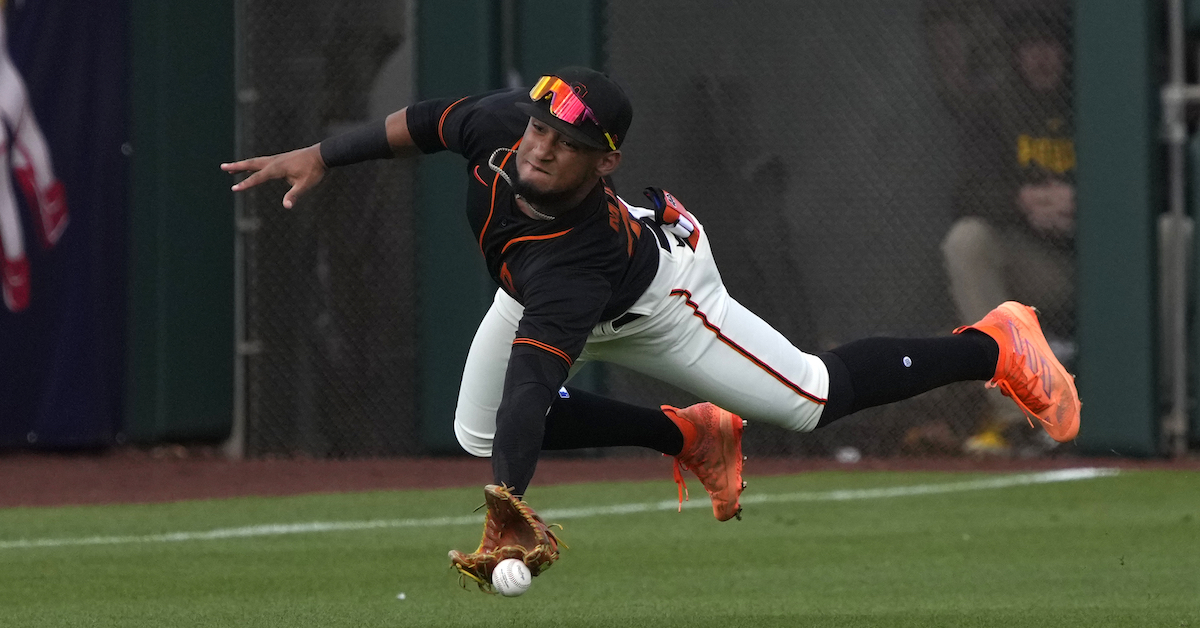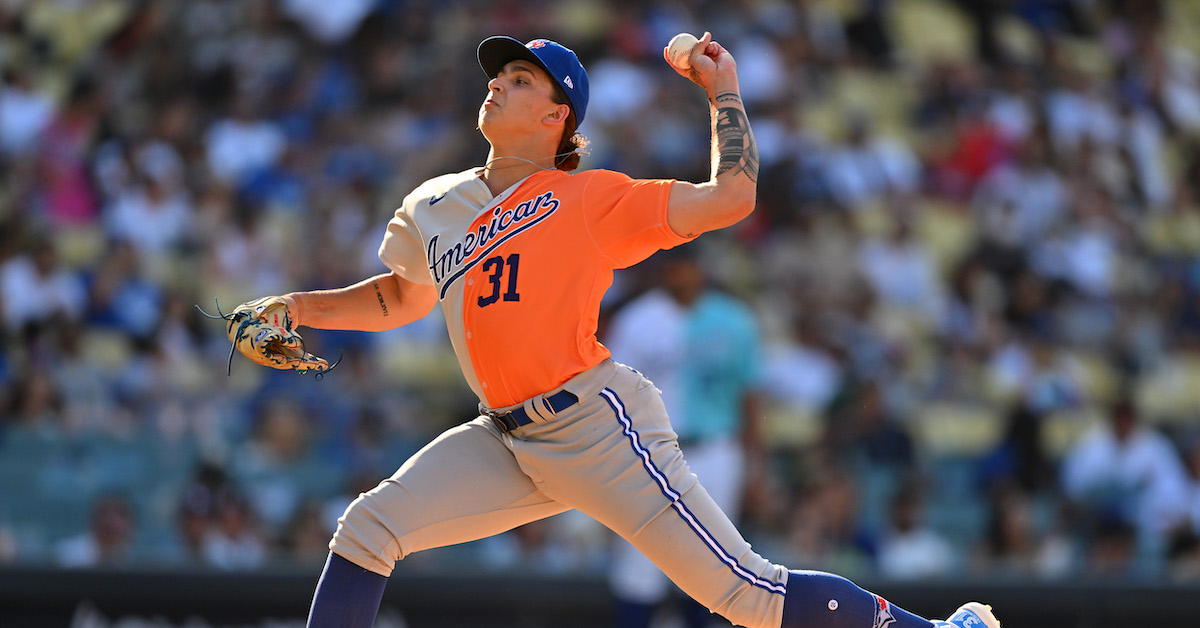Rays Prospect Evan Reifert Has a Wipeout Slider

Evan Reifert has one of the best sliders in the minors. In the words of our lead prospect analyst Eric Longenhagen, “the pitch is incredible, a low-80s knee-buckler that he throws about as much as his fastball.” Moreover, the numbers are as good as the observations. As Eric noted when profiling the 23-year-old right-hander for our 2023 Tampa Bay Rays Top Prospects list, Reifert’s slider “generated the top whiff rate of any pitch in the 2022 minors at a whopping 70%.”
Overall, the numbers were that of a work-in-progress. Pitching between three levels — the majority of his 31 relief outings came with High-A Bowling Green — Reifert logged a 4.58 ERA and issued 20 free passes over 37.1 innings. He was also overpowering; thanks largely to his signature pitch, the Wilton, Iowa native fanned 62 batters.
Assigned to the Arizona Fall League’s Mesa Solar Sox to build on what had been an injury-interrupted campaign, the erstwhile Milwaukee Brewers prospect — Tampa Bay acquired him in exchange for Mike Brosseau in November 2021 — proceeded to put up eye-popping numbers. In eight AFL appearances comprising 11.1 innings, Reifert registered 25 punchouts and allowed just one hit.
Reifert, who is currently on the injured list at Double-A Montgomery, discussed his wipeout slider during spring training.
———
David Laurila: You have a plus-plus slider. What is the story behind it?
Evan Reifort: “I was pretty young. I was growing up playing travel ball, and I have a great uncle who was a really good pitcher back home in Iowa. His name is Ron Reifert.”
Laurila: Did your great uncle play pro ball?
Reifert: “He did not. Unfortunately, polio kind of got to him — I believe it was polio — so he was unable to go on to play pro ball, but he pitched at the University of Iowa and was really good. That’s kind of where I started learning how to throw a slider, from him. I was probably 10 or 12, and from there it’s morphed into the pitch it is today. I found a grip that I liked and have even modified it since then. It’s definitely gotten harder and sharper over the years. But yeah, all I really do is rip it and let it do its thing.” Read the rest of this entry »








